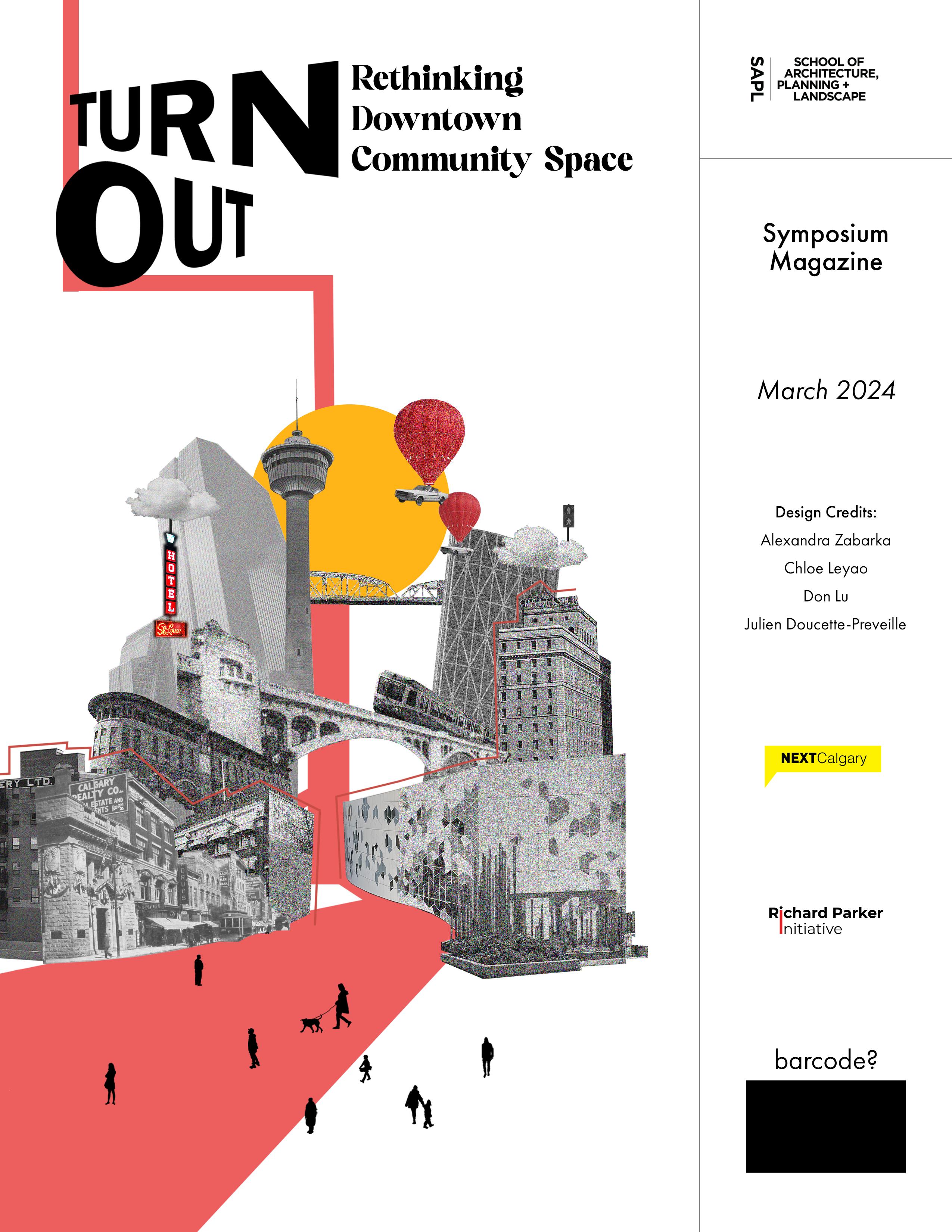

Symposium Team
Fabian Neuhaus
Julien Doucette-Preville
Mary-Ellen Tyler
Chloe Leyao
Don Lu
Ibrahim Taleb
Alexandra Zabarka
Partners
Bow Valley College
Calgary Downtown Association
Calgary Public Library
Support Team
Anita Denton
Event Management
Diba Mohebzadeh
Social Media
Annie Ngu
Marketing and Photography
Project Lead
Project Coordinator
Project Coordinator
Undergraduate Student Reseacher
Graduate Research Assistant
Graduate Research Assistant
Graduate Research Assistant
City of Calgary
Calgary Municipal Land Coporation
Timi Bankole
Rachel Dembina
Hawjin Falahatkar
Bushra Hashim
Claire Heidenreich
Stacy Florendo
Ryan Lebell
Leigh Linsey
Felicia Opoku
Natalie Robertson
Sarah Wilkins
CONTENTS
Introduction page 4
Street Meet page 6
Registration Comments page 8 Contributors page 10
Partners page 11
Municipal Strategy
page 14
Manifesto page 18
Historical Overview page 12
Program page 16
Shared Lunch page 20
Tables page 24 Action Items page 28

INTRODUCTION
We are seeing dramatic social challenges in the streets of Downtown Calgary. Homelessness is an ominous presence, and the impact of addiction and substance abuse is putting pressure on public space creating a tense atmosphere It is the intersection of cost-of-living crisis, homeless crisis, addiction crisis and a broad transformation is social norms. The built environment does not work the way it did before COVID, a lot has changed. For the School of Architecture, Planning and Landscape (SAPL) this is a central concern, how do we design for a range of needs in today’s urban context?
The personal misery of the individuals affected is the visible result of a systemic social breakdown. In fact, the built environment and homelessness have long been opposing yet inseparable concepts in industrial societies. While housing has increased, so has homelessness. It is not a new problem
by any means. Around the world and here in Calgary, for decades, this challenge has been part of planning efforts. The question today remains the same: How do we approach this challenge in a respectful yet critical and innovative way?
From the perspective of SAPL as a design school, this has a lot to do with the built environment’s design. City building, however, is a cultural process with many stakeholders, many of whom are here in this room today. Homelessness, addiction, human dignity, and safety are collective issues. And we can assume that they are larger than what is visible on the street. Not all homeless individuals sleep on the street. These visual symptoms are a compendium of all the failures and flaws of society. They are a symptom of an economic crisis, a housing crisis, a cost of living, or a social crisis and illustrate the extreme polarity of the distribution of wealth. It is not
just about housing and access but also education, healthcare, justice, and the design of the built environment. The reasons someone might end up on the street are manifold: unemployment, family crisis, intergenerational trauma, mental health, and addiction, to name a few common causes. What we see is the most extreme locus for issues of gender, race, class and even climate change.

“All human beings are born free and equal in dignity and rights. “
- Universal Declaration of Human Rights (Article 1, 1948)
TURNOUT: Rethinking Downtown Community Space is addressing social crises in downtown areas, particularly focusing on homelessness, addiction, safety, community well-being, and harm reduction. The goal is for as many stakeholders, professionals, and change makers as possible to come together to explore how to address these multifaceted challenges. By bringing together a diverse group of stakeholders, the symposium will help facilitate further collaboration and promote greater understanding and comprehensive solutions for the social crisis in the city’s downtown. The symposium is open to everyone and aims to engage the broader community in discussing, brainstorming, and acting on social challenges in downtown areas.
The event was hosted by the School of Architecture, Planning and Landscape (SAPL) in collaboration with the City of Calgary, the Calgary Downtown Association, the Calgary Public Library, CMLC, and Bow Valley College at the City Building Design Lab downtown. This one-day symposium program included input by the Downtown Safety Leadership Table with a panel and a keynote on the broader context of homelessness together with social design innovation. By bringing together a diverse group of stakeholders, the symposium seeks to foster collaboration, promote understanding, and lead to comprehensive solutions for the social crises in downtown areas.

STREET MEET
In between late February and early March 2024, we embarked on a series of interviews in Downtown Calgary, aiming to capture a diverse range of perspectives to bring into the Symposium.
Our approach was straightforward yet inclusive. We engaged individuals from various demographics on an ad-hoc basis, spanning different age groups, socio-economic backgrounds, and levels of engagement with Downtown. Out of 33 attempts, we successfully conducted 25 interviews, with the Calgary Central Library emerging as a prominent location, hosting 40% of our conversations.
Respecting the privacy of our interviewees was paramount. Prior to each discussion, we sought explicit consent for recording, offering options for both video and audio formats. For those preferring anonymity, we accommodated their wishes through discreet sketching techniques, later digitizing these representations for documentation purposes. Throughout the process, we remained committed to ethical conduct, ensuring confidentiality and respect for each participant’s story and perspective.
IT’S A BEAUTIFUL CITY , THE PARKS ARE GORGEOUS, THE STATUES ARE AMAZING [...] BUT i think it’s very unfriendly to homeless people
- cathy
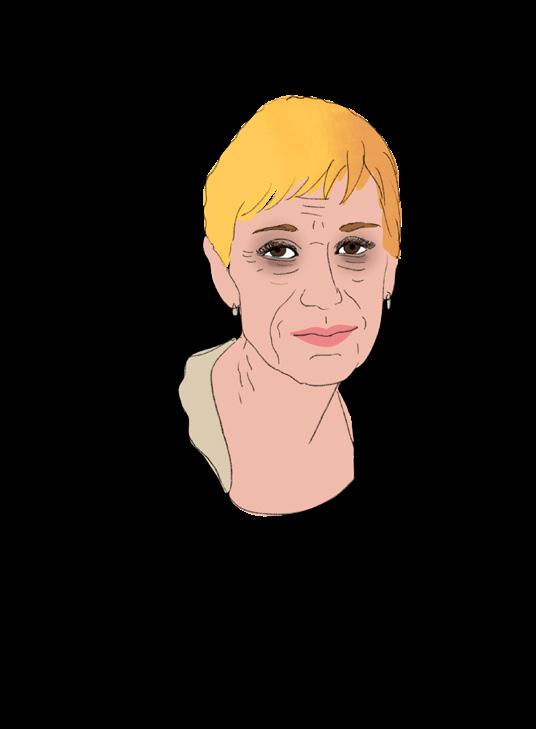
I’m very passionate about the downtown. I’m passionate about high density living. I don’t see the current model of suburbs as an effective plan for the future. I’m here to educate myself on the problems with high density living as it currently exists in Calgary and how can wE CAN MAKE IT BETTER from an architectural standpoint.
- nyle, SAPL STUDENT

I thought everything was going to go as planned here. I’m still looking for a house, too. It’s just the transportation. We did pay for our rent, but me and her got kicked out two days ago.
- faith

STREET MEET
I remember one time when I was in the summer here, there was somebody sitting on the river, they were playing a saxophone, people were attending different events there, just walking around. And that was what downtown and what cities should be, right?
- anica, SAPL STUDENT



Downtown is good. It’s more convenient, like stores, Chinese food, bakeries, everything. You have recreation. You got nature. Some people say, you don’t have to travel. It’s a good location
- roly

It was pretty quiet when I got here then I realised that DI was over there. Got a little rowdy during the summer but I like it down there. There’s quite a bit of everything around here [it] just seems pretty cool.
- stephen
When Covid started and post Covid, that’s when the population of homelessness increased, which is very interesting. But that also shows how the prices of houses are increasing, that they couldn’t afford it anymore or they also lost their jobs and they couldn’t pay for their mortgage.
- GEN, SAPL STUDENT
I think just expanding a lot of what’s going on right now. The new architecture kind of growing and surrounding old ones and building together.
- rACHEAL

look for the rest of the interviews throughout the magazine!
REGISTRATION COMMENTS
Prior to the event we asked registrants to share one idea on how to tackle the Social Crisis Downtown right now – how, with whom, and what is needed...here is what they answered:
True wrap around supportive housing. | Instead of investing money into revamping olympic plaza, use those millions to develop 10 grassroots parks and pop-up community spaces to broaden the reach of positive outcomes of accessible public space. Engage with downtown CA‚ businesses and not-for-profits to create high levels of ownership and programming into these spaces. | City of Calgary provides staff or contractors to event organizers to mitigate problems caused by events displacement of unhoused/other vulnerable populations | Provide market driven affordable downtown housing and student housing to revitalize the streets and bring much needed housing, activity and socioeconomic diversity to the core. | Collaborative data collection that support both social service delivery and enforcement. | Outdoor Indigenous spaces for ceremony and community building | Cultivate a culture of community that includes all instead of a punitive approach. | Consider equity, diversity, inclusion, accessibility, and universal design with space designers, by collaborating with experts in this field. | | More work needs to be done to flip the high concentration of vacant lots (parking), vacant buildings and homeless shelters in the downtown east end to more diversified housing options and housing density as per the East Village Area Redevelopment - keep it on track, accelerate it. | More innovative housing, more people and support, all day, year-round | More housing and addiction supports for the unhoused population. More communication between groups addressing the crisis Education for the public. Opportunities for the public to experience Downtown in positive ways while increasing awareness of the ongoing issues. | housing across the city would support better outcomes for the downtown in general, reduce crime and substance use, and improve community events downtown | If artists have access to affordable space, they bring many benefits to everyone on our downtown and neighbourhoods. Refer to the Meanwhile Lease “SpacePilot” currently underway with cSpace Projects. | We need housing first. Tiny homes, pre-fabricated homes. Boarding Rooms. | More housing! | More collaboration between all stakeholders in the downtown space. This includes service providers (like the DI), businesses, residents, and of course, City of Calgary members and other decision makers. | Build more affordable and deeply affordable housing if you are looking for long-term solutions. | Shelters are not welcoming, and actively avoided because of various reasons. We need to provide more that are safe, secure, clean, and provide further assistance addressing Trauma. | This is a bit lazy to say, but we need more resources. But in the absence of that, we could benefit from better coordination of supports, and more spaces for access to coordinated support. We need to integrate social service access in the many other services (library, city fair entry, etc.) | Better CPTED, more vibrancy within core | Ambassadors to engage people and share positivity. | More collaboration and sharing of resources | More cross-collaboration between downtown stakeholders to develop solutions, programs, events and initiatives. | Opportunities to train existing service providers in how to engage with vulnerable demographics in a positive way. Agencies already exist that do it well, people that already engage should have Opportunities to learn from agencies and people that know and do it well. Would require partner agencies and staff. Some kind of hands on would be ideal, shadowing or similar. | Reach Up site will be a good start. Continue increasing funding like CSIF. Recognize the part that social service providers can play and their unique ability to handle that which statutory services cannot. | More budget for facilities, staff, housing, training...etc. etc. etc. | Bylaw/Social Worker Teams deployed in downtown parks to address social disorder while supporting folks that need social services. | Addressing the problem upstream - engaging folks on the edge of homelessness, living in cars, etc. | partnerships | Create places for people to go during the day. Collocated with supports and resources if they wish | | Idea: categorize streets based on desired activity level. How: make public realm safety improvements to highest activity streets to promote sense of safety and activity. Who: City, community groups, landowners. | Collaborative events that bring together a cultural offering with a range of support service agencies contributing through provision of service to both manage the area and provide outreach (social services, bylaw, security, medical etc.) Direct support vs expecting event organizations to hire and manage independently | More funding | continue to educate the public on who they can call for support, ensure MOUs are in place for police, bylaw, transit, AHS and other partner agencies. | Review the shelter system & their services delivery ASAP! | More peer support presence | The South Sudanese Community is in need of space to socialize and meeting others | Keep our hearts and minds open- a) gather stories, normalize destigmatize, educate the general public. B) study what has worked elsewhere c) use architecture to hold the unhoused‚ and not shoo them away c) ask the people what they need ‚listen‚ keep asking ‚ go a little deeper d) offer warm good food without the Jesus message - Jesus is good but may trigger some‚ give it because its the right thing to do | Idea: Community Empowerment Hubs Concept: Create Community Empowerment Hubs in Downtown Calgary. These hubs, located strategically, offer services and activities for marginalized people, promoting immediate aid and long-term resilience. They embody a spirit of service and empowerment.” | More street level resource teams building relationships and facilitating access to programs to reduce
harmful behaviour. | Training and funding - business in the downtown area are struggling to support staff on dealing with this social crisis that they encounter just coming into work, and many businesses don’t have the funds to support training or other security measures. | TBD | Housing first! Make safe affordable housing available to all, with appropriate supports. Reduce desperation, reduce crime, create safer and more healthy communities. | Collaborative approaches to increasing permanent supportive housing tailored to high acuity folks, and pre/post treatment transitional housing. | It’s crucial to focus on affordable housing investment through collaborative efforts. By forging partnerships, simplifying regulations, and promoting mixed-income developments, governments can expand affordable housing options. Adequate funding, community support, and long-term planning are vital for success, fostering inclusive urban communities and mitigating the crisis. | Need government investment into housing before social/ health services start working with the people in need, as well as employment opportunities for the same | “Make downtown walkable & safe with Jane Jacob’s ‘eyes on the street’: a. Get rid of one way streets. b. Remove +15’s ... get people and retail back at street level & outdoors. c. No more social housing ghettos... mix market and social housing in same building.” | Public washrooms and water fountains | Create training modules for that address vulnerable population understanding, safe drug supplies, etc. that are easily accessed for employers, residents, and other organizations like community associations, service agencies, etc. | Safe Consumption Sites should re-open. | Further Education for Downtown Community members and Businesses around minimize any negative health or social outcomes associated with sexual activity or substance use by building relationships, and promoting autonomy so people can make informed decisions and lessen potential harms to self and the broader community. | I would like to see the rapid deployment of modular transitionary housing on city owned parking lots spread through out the Beltline and Downtown. | More access to mental health and addiction services, including safe consumption sites and widespread access to programs. | More housing | N/A | The need for social housing is key; however, I am attending the symposium to learn more about this issue and explore how our inner city church might be able to assist in addressing the situation. | A comprehensive addictions program with safe injection sites, transitional housing and employment opportunities, re-skilling and education. It needs provincial funding, experts on addiction and homelessness to run the program | We need a basic income | Convert almost empty churches to housing. | Look at at social protective factors. Go upstream instead of reacting. Build spaces where people can live how they want. | Expanded arts/entertainment/culture and sports facilities in the core. | this is a multifaceted social failure and has no one stop solution: we require pop up overdose prevention warming spaces scattered throughout the downtown core, income supports, decriminalized substances, more kindness and compassion, less police as a response to poverty and mental health crisis, no barrier food access (ie soup kitchen), social spaces, bathroom access. | TBD (coming soon!) | A good chunk of the northern central downtown needs an overhaul in the public realm. So many of those streets are ugly, falling apart, and dominated by cars in a way that makes them unattractive to anyone who can choose to go elsewhere. Fewer eyes on the street mean that those places become more dangerous. I hope that mixed use property development + public space in the area kickstarts renewal. | Alumni Program and Event Invitations | More non-market housing that is both pet and harm-reduction friendly, while being connected to services and transit. | Launch a downtown maintenance team to identify low cost maintenance items to the public realm (sidewalks, parks, furnishings, etc.) and respond to maintenance requests. | Connect and partner with existing grassroots organizations that have established trust and credibility with those affected and impacted by the social crises to develop and implement solutions. | Outreach teams that represent residents or stakeholders in specific parts of downtown, esp. East Village, Inglewood, Eau Claire that do warm referrals. | Increase presence of low-barrier, intentional, and person-lead supports such as street-level outreach groups that offer case management, system navigation and advocacy. i believe social crises in vulnerable populations persist, in part, due to increased hesitancy and distrust of public systems and institutionally - designed supports. Shift from policing to intentional relationship building. | Consistent growth of partnerships both enforcement based and social based. Focus on tackling the issues before they arise. Collaboration with City stakeholders and private stakeholders to not work in silos. Expanding on the growth and work that is currently being done between downtown partners. Public facing hub for businesses to work together. | Need commitment, a vision and some funding for hub. | Create a model of care for addictions that reflects the stages of change; provide resources all the way from harm reduction to treatment. | national or provincial basic income program | | Drop in learning on topics (like coding) that can turn into freelance jobs for people | utilize land value capture mechanisms to fund the expansion of non-market housing | Key is connections across disciplines | Compassion! | Attend this symposium! | Work on giving houses to the homeless, bc its less expensive for the city than keeping them on the streets, and it lets them more easily rejoin society. (tiny house communities?) | How do we amplify the roles of grassroots communities in social crisis? | Providing dignified shelters and provide homeless folks means to work and support themselves | Create spaces where diverse community can gather, feel safe and connect | collaboration | Safe and adequate emergency spaces for people experiencing homelessness. There is also a lack of daytime options in Calgary for people who are unhoused. | “stronger collaboration between social, health and mental health services to increase engagement and use of services | Make this downtown a place where people can live. It‚ public realm, including streets are not designed this way currently‚ designed for people to leave as fast as they can. The city with business need to alter this. If people are to live downtown, the infrastructure needs to support this. |
We were fortunate to welcome representatives from 34 distinct frontline organizations actively engaged in downtown initiatives. Their presence, alongside the contributions of 9 dedicated community partners who assisted in organizing the event, greatly enriched our discussions, offering diverse perspectives crucial for tackling the complex issues facing our community.

Contributors - 12 Community Safety Initiative | | ActivateYYC / Federation YYC | Ayrshire
Group | Big Brothers Big Sisters of Calgary and Area | BOLD Workshop Architecture | BOMA Calgary | Bow Valley College | BrookMcIlroy | BUMP Festival - Beltline Neighbourhoods Association | Calgary Alpha House Society | Calgary Arts Development | Calgary Downtown Association | Calgary Drop-In Centre | Calgary Food Bank | Calgary Foundation | Calgary Homeless Foundation | Calgary Municipal Land Corporation | Calgary police service | Calgary Public Library | Carya Society of Calgary | City of Calgary | cps | Distress Centre @ SORCe | Diversity Team CPS | Faculty | For The City | Fort Calgary | GGA-architecture | HomeSpace Society | Inn from the Cold | Innovate Calgary | Inova Systems Corp | Knightsbridge Custom Homebuilders Ltd. | National Music Centre |
NEXTCalgary | SafeLink Alberta | Scarboro United Church | School of Public Policy, University of Calgary | Simon House Recovery Centre | Sinneave Family Foundation | Skibo Media Services, Inc. | Street Cats YYC | Strong Towns Calgary | The Alex Community Health Centre | The Calgary Drop In Centre | THE CITY OF CALGARY | The Salvation Army Calgary | The Salvation Army Community Services Calgary | Transit Public Safety | United Way | United Way/The Social Impact Lab AB | University of Calgary | UofC - and ABSPORU-PE Team | UofC SAPL | Vibrant Communities Calgary | Wood’s Homes (ECMHS) | Zeidler Architecture
PARTNERS
Bow Valley College | City of Calgary | Calgary Downtown Association | Calgary
Municipal Land Corporation | Calgary Public Library | School of Architecture, Planning and Landscape | University of Calgary





HISTORICAL
OVERVIEW
The issue of people experiencing houselessness has become increasingly worse over the past few decades. One of the first big factors was the provincial government’s strict reforms to social assistance in 1993 and the federal government’s devolution of responsibility of non-market housing to the provincial and municipal governments by 1996. This withdrawal increased the Point-in-Time count to rise approximately 31% every two years from 1992 until 2008. However, organizations serving vulnerable populations have been a strong part of
the City of Calgary since the mid 20th century. From the Drop-In Centre to the Calgary Homelessness Foundation, to grassroots organizations like the Bear Clan Calgary, these social services have helped our downtown communities with compassion and support to transition individuals and families into housing. The following timeline visualizes the various initiatives around housing and social support throughout the past 5 decades in Calgary.
The Mustard Seed, a Christian non-profit organization caring for individuals experiencing homelessness and poverty, opens its doors
The Distress Centre’s Teen Line was established to provide the youth of Calgary with a place to call. This service, answered by teen volunteers, was the first of its kind in Canada.
- Calgary’s Alpha House opens its doors - Different religious leaders in the community join forces to create the Calgary Food Bank
-The Alex’s Seniors Community Health Centre official opens their doors, providing comprehensive outreach and medical support for low-income seniors.
Alpha House operates 2 COVID-19 isolation programs, one in Calgary and one in Lethbridge
The Calgary Homeless Foundation launches Together to Zero: Calgary’s Plan to End Homelessness
Alpha House’s first permanent supportive housing building opens – an all-Women’s supportive living program
-Businessman and philanthropist Art Smith founds Calgary Homeless Foundation.
- Median income of Alberta’s Indigenous households was $29,522 as opposed to the $47,717 of non-Indigenous individuals
- The Alberta government assembles a working group to address 2SLGBTQIA+ youth homelessness across the province
Habitat, the United Nations Conference Settlements, was held in Vancouver. collectively proclaimed the international community’s commitment to promoting shelter and living conditions throughout
The federal government announces the devolvement of the housing program administration role to the provinces
- Flood Stories: Creative Flotsam on the Edge of High Water - a limited edition book telling the stories of Calgary’s unhoused during the flood
The Alberta Flood affects 70,000 Calgarians.
- Alpha permanent-supportive programs
- The Homeless Management Information Systems (HMIS) is unveiled
Conference on Human Governments international promoting decent throughout the world.
Calgary Women’s Emergency Shelter becomes a registered charity
The Alex, a health, housing, and community organization, was granted charitable status.
-Alberta government introduces strict reforms to social assistance. Provincial officials make it much more difficult for Albertans to qualify.
Fresh Start Recovery Centre is founded, a live-in alcohol and drug addiction treatment centre.
Alpha House’s first three permanent-supportive housing programs open
The Dream Centre’s Men’s Community Housing launches, offering stable, supportive, and affordable options.
The Municipal Development Plan was adopted by the City to ensure a choice of housing forms and affordability for sustainable, local communities.
The City of Calgary’s Housing Strategy
Some (of 98) actions:
Housing Land Fund to provide land to housing providers priority on the development of nonhousing residents in rental housing experiencing normal increases in rent
Distress Centre Calgary opens its doors as the Drug Information Centre with the goal of providing unbiased drug information and education
CUPS Calgary Society is founded, working to help Calgarians affected by poverty
- The Calgary Homeless Foundation launches the Ten Year Plan to End Homelessness.
Cost of homelessness in Canada was $7 billion, due to the high cost of homeless shelters, justice system, and emergency healthcare costs
The City Council approves the Beltline Area Redevelopment Plan, with the vision to be an authentic, livable and high density urban community through the provision of a wide variety of land uses and building types.
imagineCALGARY, a city-owned and community-led initiative, was launched in January with the goal of producing a long range urban sustainability plan for Calgary
Council’s Strategic Direction 2023-2026, which focuses on diversifying the range of housing options by increasing transitional and affordable housing and simplifying the pathways to permanent housing
Aboriginal Friendship Centre of Calgary opens a new Urban Indigenous Seniors Living Facility in Calgary
Indigenous people overwhelmingly encompass Alberta’s homeless population, representing 3% of Calgary’s population but 30.1% of Calgary’s 2022 Point-In-Time Count
MUNICIPAL STRATEGY
The Downtown Safety Leadership Table, formed in September 2023, comprises downtown influencers collaborating to devise strategies for enhancing safety in downtown Calgary. Over the subsequent seven months, they engaged with more than 45 community and social service partners and providers. Through these dialogues, the group gained insights into the challenges facing downtown Calgary, the extent of current services and ongoing investments, and potential solutions to bolster safety and vitality in our city center. The findings are being translated and implemented as part of the Transit Public Safety Strategy and Housing Strategy and funding the Mental Health and Addiction Strategy.
Downtown Safety Leadership Table
2024 March 6
OUTCOMES & RECOMMENDATIONS:
The Downtown Safety Leadership Table has identified four focus areas supported by 28 recommendations designed to support safety in Calgary’s downtown. The recommendations are not presented in order of priority. The Table recommends that City of Calgary Administration identify a suitable lead and implementation path to prioritize and advance each recommendation.
Timeline
The recommendations for each focus area are grouped under three proposed implementation timelines:
Quick Wins (1 year):
These recommendations are immediately actionable and can be implemented within a year or less.
Further Research (1-3 years):
These recommendations are priorities that will require further research and/or time to implement.
System Impacts (3+ years):
These recommendations are to be actioned under a systems approach with multi-order government support and may take up to three years or more to fully implement.
Quick Wins
1 year
1. Support the development of affordable, supportive market housing tailored to the needs of Calgarians and connected to the work of ‘Home is Here, the City of Calgary’s Housing Strategy’ and ‘A Way Forward, Affordable Housing for Urban Indigenous’.
2. Further development of the Indigenous Gathering Place (IGP) and other Indigenous places to gather—spaces where Indigenous peoples can share, connect, heal, and celebrate Indigenous cultures.
3. Resource grassroot and community-led volunteer groups and organizations that have high-trust and shared experience with community members that are experiencing homelessness and marginalized conditions.
4. The City of Calgary to advocate with the Government of Alberta for the continuation and expansion of service hub models and funding for shelters to ensure that recovery-oriented addiction and mental health services, primary health care, cultural connections, and housing options are available to those accessing or leaving shelters.
Further Research or Time Required
1-3 years
5. Incorporate Indigenous recovery supports that reflect a culturally informed continuum of care options for Indigenous peoples struggling with mental health and substance abuse. Create culturally informed approaches to assist families and those supporting family members struggling with addictions and mental health challenges.
6. The City of Calgary and Government of Alberta to provide opportunities and resource supports to Indigenous and Indigenous-serving organizations to offer frequent and varied programming and activations downtown that enable Indigenous people to connect with the natural world.
System Impacts
3+ years
7. Many vulnerable and at-risk youth transitioning to adulthood require access to the shelter system but do not feel safe in an adult shelter. Create a transition shelter between youth brackets and the adult system to better meet the expressed needs of this group in transition.
PROGRAM

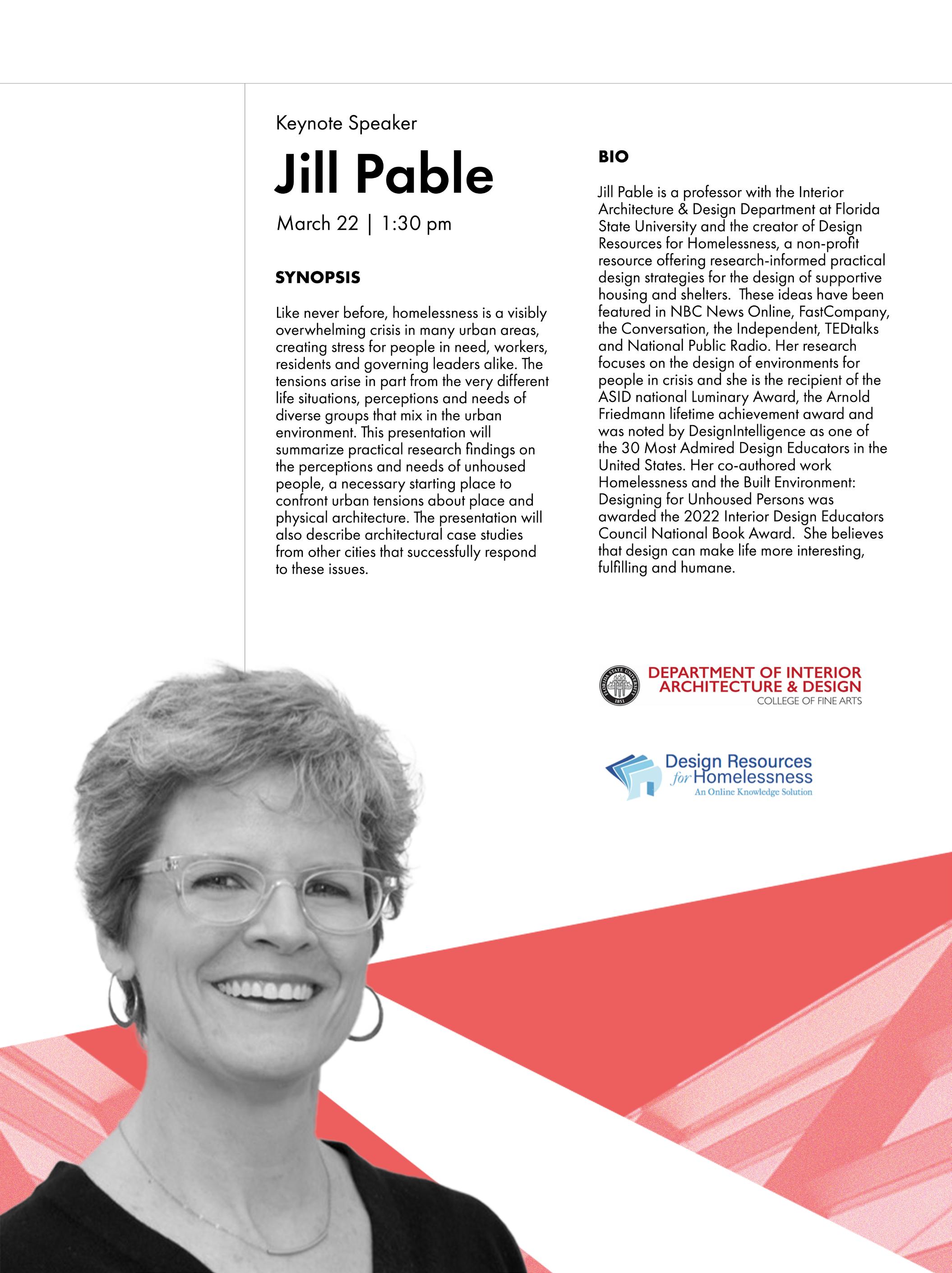
MANIFESTO
In the first breakout groups of the day, symposium participants split into three circles. The goal of this session was to get to know other participants and begin sparking dialogues. Additionally, each group generated a manifesto detailing their visions and hopes for all Calgarians. The circle session generated a broad overview of the issues and ultimate shared goals for the city, providing participants with a framework to bring with them as we devled into more specific topics throughout the day.



CIRCLE 1
Moderated by Sasha TSENKOVA
The conversation in circle 1 focused on various perspectives on housing and community development. Discussion emphasized resistance to change from some groups and explored strategies to increase housing supply while addressing affordability issues. Suggestions included repurposing existing spaces, such as converting offices to residential units or using shipping containers for housing. The conversation also touched on the importance of local grassroots information, combating biases, and understanding the root causes of homelessness. Key themes included designing spaces to reintegrate marginalized individuals into the community and the challenges of implementing housing-first models. The group mentioned historical examples like Red Vienna and modern urban housing strategies like those in Amsterdam and Singapore. Finally, it addressed obstacles such as NIMBYism and the need for government intervention to address housing affordability.
CIRCLE 2
Moderated by Joseli MACEDO
Participants in circle 2 discussed inclusivity, safety, and community engagement, particularly regarding vulnerable populations and urban environments in Calgary. Common themes emerging were advocacy for vulnerable populations, balance between safety and inclusivity, collaborative solutions, transitional housing and support services, and policy and systemic change. Key items in the manifesto included: advocating for inclusive urban design that considers the needs of marginalized communities, promoting communitycentered solutions to foster a sense of belonging and responsibility among Calgarians and addressing gaps in support services for vulnerable populations, including transgender individuals experiencing homelessness. The discussion emphasized the importance of creating spaces and policies that prioritize inclusivity, safety, and dignity for all residents of Calgary. Participants expressed a collective desire for bold change and proactive solutions to address systemic challenges and foster a sense of community and belonging among Calgarians.
MANIFESTO CIRCLE 3
Moderated by Jill PABLE
Participants in circle 3 discussed various challenges and opportunities related to delivering programs and services, supporting vulnerable populations, and enhancing community safety in downtown Calgary. Participants highlighted the need for policies and funding to address homelessness and provide intervention and prevention services for addiction and mental health issues. Discussions revolved around creating safe spaces run by individuals with lived experiences and addressing social stigma associated with homelessness. Attendees emphasized the importance of promoting collaboration between academic institutions and the community. Key items in the manifesto included taking proactive steps to support vulnerable populations, particularly Indigenous students, encouraging a shift from NIMBYism to YIMBYism, and recognizing the role of design in creating dignified and accessible spaces for all residents, regardless of socioeconomic status. The discussion emphasized the need for actionable steps and resources to address homelessness, addiction, and mental health issues, and the importance of collaboration in creating inclusive and safe environments. Participants expressed that in order to build ownership and responsibility for our communities we need to achieve a sense of belonging in all Calgarians.
They’ve made it to the point where they’ve excluded everybody. Before and back in the day, you could go to the Plus 15 all the time. Now, they’ve locked everything up. They’ve fenced off everything. It’s inaccessible to people that actually really need it.
- DARYL

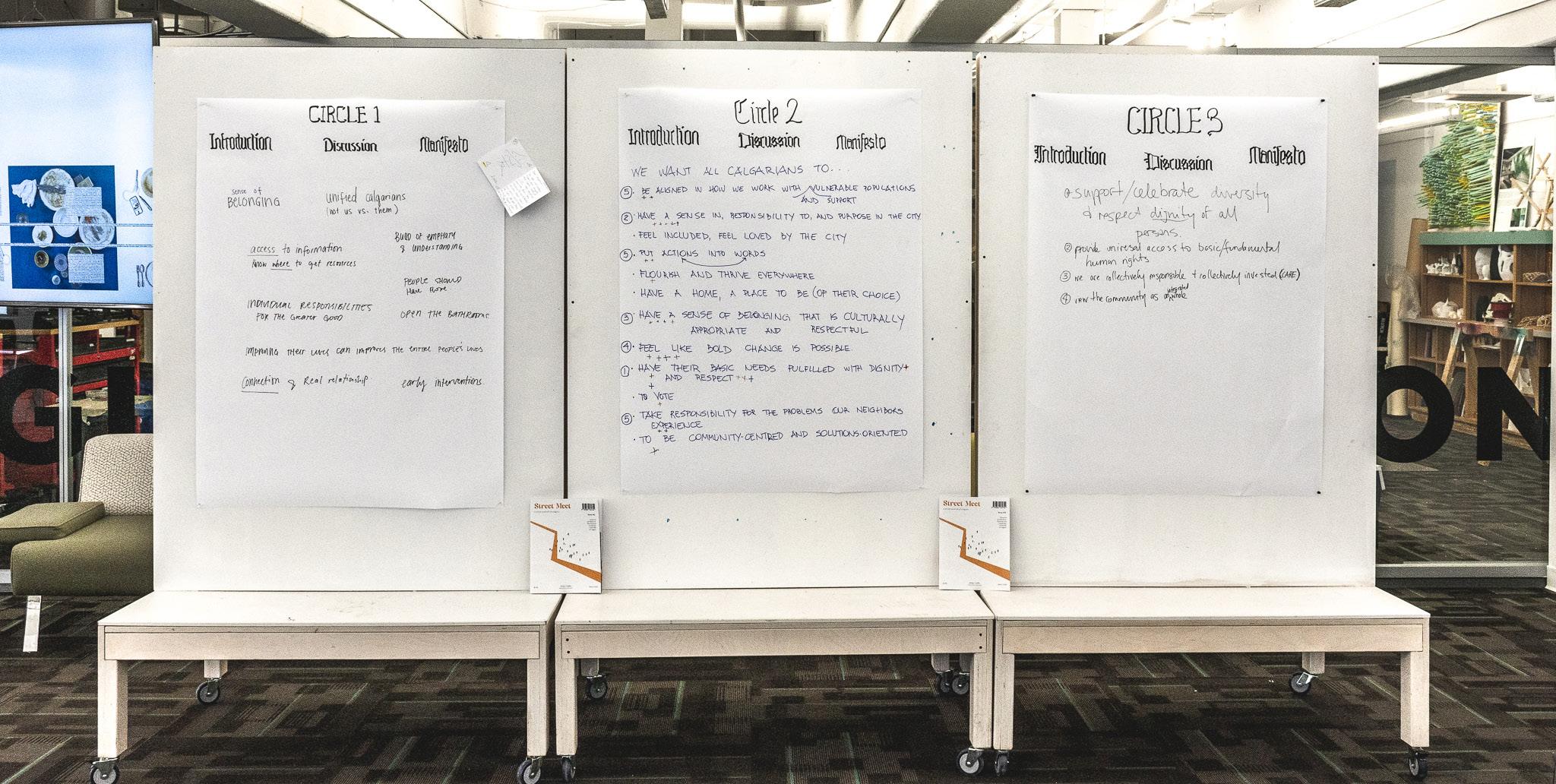
SHARED LUNCH
At the symposium’s shared lunch, participants seized the opportunity to forge connections and extend the dialogue beyond the formal discussions. Attendees engaged in meaningful exchanges, building bridges across diverse perspectives. It was a moment of communitybuilding, where the spirit of collaboration thrived over shared meals, laying the groundwork for future cooperation and collective action in addressing downtown Calgary’s social challenges




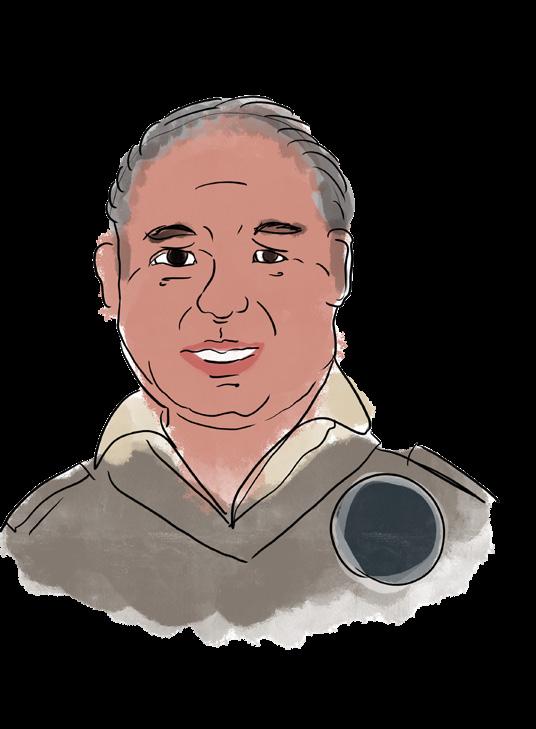
I work here in this Olympic Plaza since the last four years. This is a very central [place] and the public come and enjoy here, especially in the winter. [...] It was a really beautiful city, especially after looking from the Calgary Tower. It’s really fascinating.
- umer
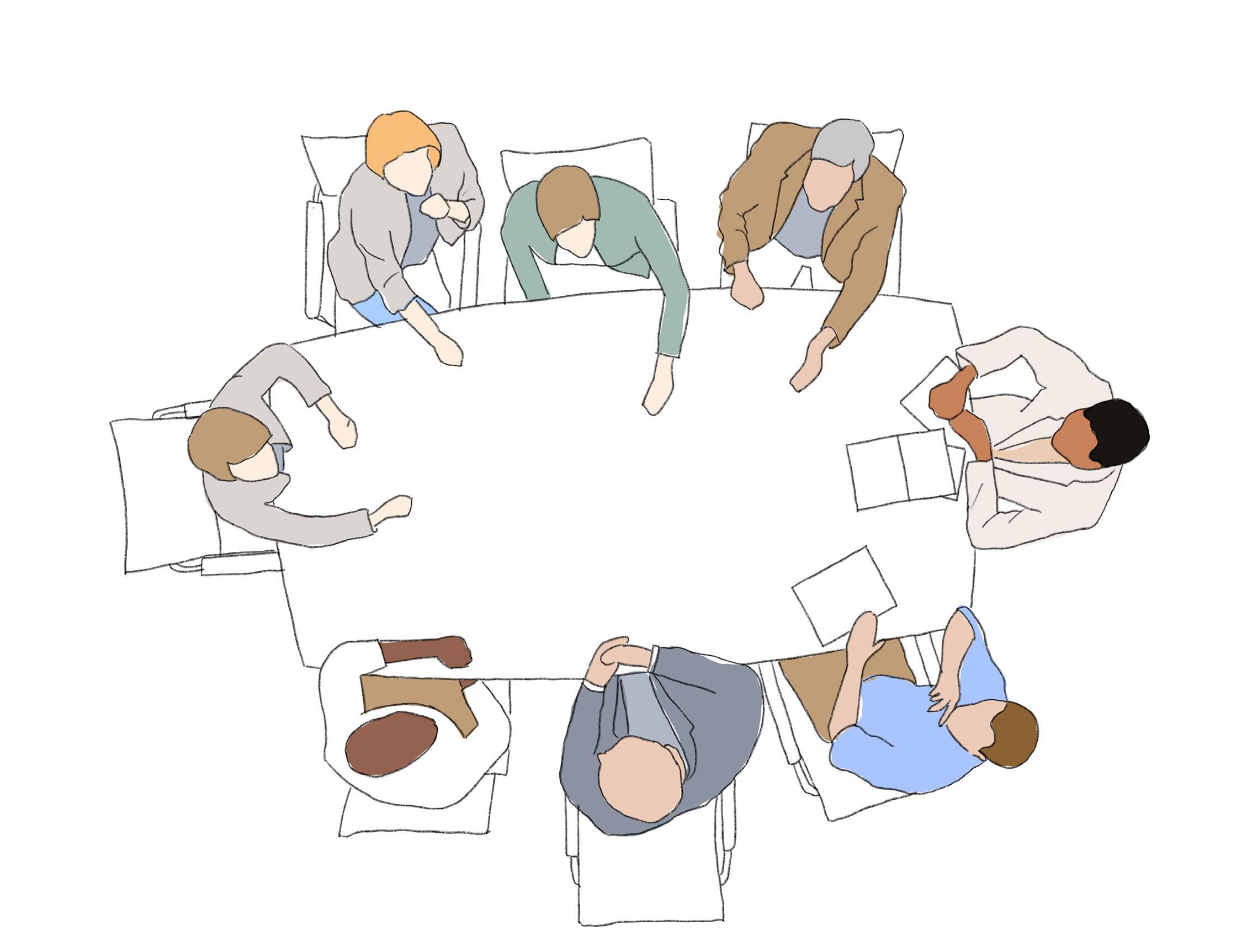
TABLES
In this section of the symposium groups come together at tables to discuss a specifc topic. The groups were created based on each individuals interest in the topics. Approximetly 8 people contributed to the discussion at each table. Symposium partners brought forth a topic of interest and facilitated a moderated discussion. The subjects broached were vast but were all tied to the complex issues facing downtown Calgary. During the discussion, the tables addressed higher order components, such as the coordination of
services and affordable housing, and the much-needed street-level interventions such as redesigning public spaces. The table discussions looked at the complex intermingling of various crises affecting people in the downtown core and used the participants expertise and insight to create a framework by which we might be able to begin to address these issues within our city.
TABLE 1: PLASTIC ECONOMY

Moderated by Ryan LEBELL and Guy GARDNER
Documented by Leigh LINSEY
The thematic discussion on the Plastic Economy explored new avenues for informal economy, particularly focusing on at-risk populations. Key themes included repurposing plastics for shelter and mobility solutions, considering safety implications, and co-creating with affected communities. Action items included interdisciplinary collaboration, involving universities, and fostering partnerships between student populations and the unhoused. Emphasis was placed on identifying immediate needs and capacities, such as collaboration with social agencies and shelters. The discussion underscored the importance of community engagement, dialogue, and utilizing existing resources to address challenges in the plastic economy effectively.
TABLE 2: AFFORDABLE HOUSING

Moderated by Sash TSENKOVA
Documented by Ibrahim TALEB
This thematic discussion explored the recommendations for implementing affordable housing, addressing the city’s priorities and resource constraints, including the risk of losing $268 million from a Canada Housing Application. Recommendations included reducing policy overreach, ensuring certainty of development approvals, allowing multi-family housing anywhere, expediting inventory production, and streamlining planning processes to avoid delays. Other suggestions encompassed increasing oversight of developer designs, advocating for medium density, addressing labour shortages, negotiating with developers, eliminating red tape, fostering community engagement, and adapting housing options. Key themes emphasized removing barriers, understanding market dynamics, enhancing infrastructure, and embracing mixed-income housing models.
TABLE 3: DESIGN IN ALCOVES

Moderated by Chad CONNERY and Dan HAPTON
Documented by Timi BANKOLE
The thematic discussion on designing alcoves to address homelessness focused on empathetic design approaches and the importance of understanding the complexity of homelessness. Participants highlighted systemic issues like poverty and lack of affordable housing as root causes, emphasizing the need for solutions that provide immediate relief while addressing underlying problems. Key themes included double-faced design to balance safety and comfort for all, promoting social integration, and reimagining urban spaces to be inclusive. Ideas included using alcoves for dialogue platforms, tailored furniture, and motion sensor lighting. The discussion also addressed ethical implications, public education, and the challenge of durable interventions, stressing ongoing dialogue and collaboration for sustainable solutions.
TABLE 4: DOWNTOWN ACTIVATION

Moderated by Steven DOHLMAN and Lisa HARDY
Documented by Stacy
FLORENDO
Table 4’s discussion on downtown social activation focused on diverse perspectives including Teresa, Josh, Hooria, and Kelsey. Emphasizing safety and inclusivity, they proposed strategies like outdoor event activation, inspired by successful models from cities like London and East Village. Public art, placemaking, and innovative initiatives such as converting parking lots into parks were highlighted. Collaboration, community engagement, and addressing challenges like homelessness were deemed essential. Overall, they aimed to create vibrant, welcoming spaces through practical strategies tailored to Calgary’s context.
TABLE 5: EMOTIONAL LABOUR OF FRONTLINE STAFF

Moderated by Raeesa FAROOQUI and Becky POTTER
Documented by Claire
HEIDENREICH
The discussion delved into the significant issue of burnout among frontline workers. They explored the concept of emotional labour, coping mechanisms, and the compounding effects of continuous exposure to difficult situations. The conversation highlighted the need for a supportive organizational culture, debriefing processes, and peer support networks to address burnout effectively. Participants emphasized the importance of transparency, peer recognition of distress, and building resilience through practical support measures such as mandated breaks, microbreaks, and regular employee check-ins. They critiqued the “self-care” mentality and stressed the responsibility of organizations to provide adequate resources and support for staff well-being. Suggestions for solutions included fostering a trauma-informed service culture, promoting a supportive work environment, and evaluating the effectiveness of support mechanisms through ongoing feedback. Overall, the dialogue underscored the crucial role of organizational support in mitigating burnout and enhancing the resilience of frontline workers.
- gurleen

TABLE 6: GREEN ALLEY ACTIVIATION

Moderated by Mark GARDNER
Documented by Don LU
The thematic discussion centered on activation strategies and green alley initiatives, addressing the challenges and potential solutions for enhancing alley utilization and vibrancy in urban spaces. Participants highlighted the impact of alley infrastructure on activation opportunities, emphasizing the need for alternative waste management methods and waste diversion strategies. Themes included reimagining alleys as part of the public realm, considering low-impact modifications such as public art, and fostering cultural diversity and community engagement. Action items proposed encompassed tactical urbanism approaches, cultural considerations, and policies to overcome barriers to access. Key themes included embracing uncertainty, changing perceptions, and implementing policies to foster alley activation as part of a broader vision for downtown revitalization.

- JOHN
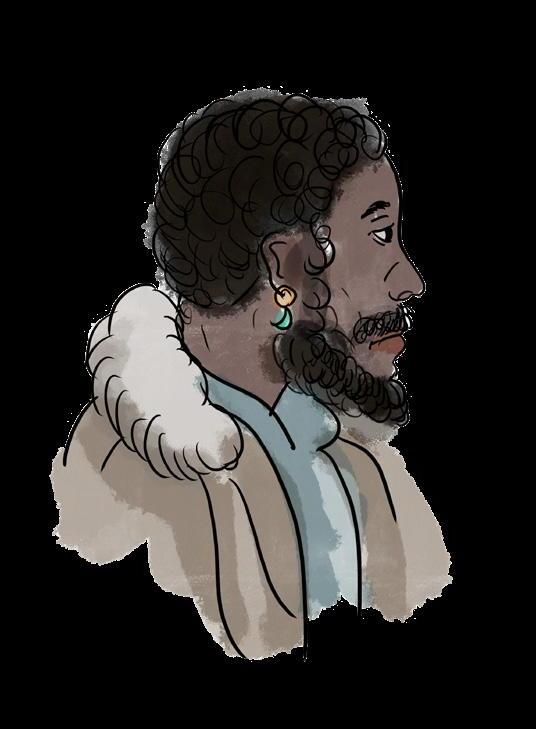
Lives dangerous. We’re scared. Anytime anything wrong, it can happen to you, to me. [...] I just want to get my life out of this life. I have family. I have kids. That’s all. I’ll pray for God you know, to get me out of this situation. [...] We need housing.
TABLE 7: SERVICE COORDINATION

Moderated by Claire LEPAN and Amanda EVESON
Documented by Rachel DENBINA
This thematic discussion delved into the impact of displacement on downtown areas and explored strategies for better coordination among service providers. Key themes included the need for collaboration to optimize resources, challenges in data sharing and coordination due to funding constraints and competition, and the importance of supporting frontline workers in the non-profit sector. Action items proposed encompassed the establishment of a data hub for better coordination, advocating for fair wages for frontline workers, and enhancing public education to address misconceptions about homelessness. Participants also discussed the potential establishment of a Navigation Centre by the Calgary Police Service and emphasized the importance of traumainformed design in creating welcoming spaces for vulnerable populations. Overall, the discussion underscored the necessity of collective efforts and systemic changes to address homelessness effectively.
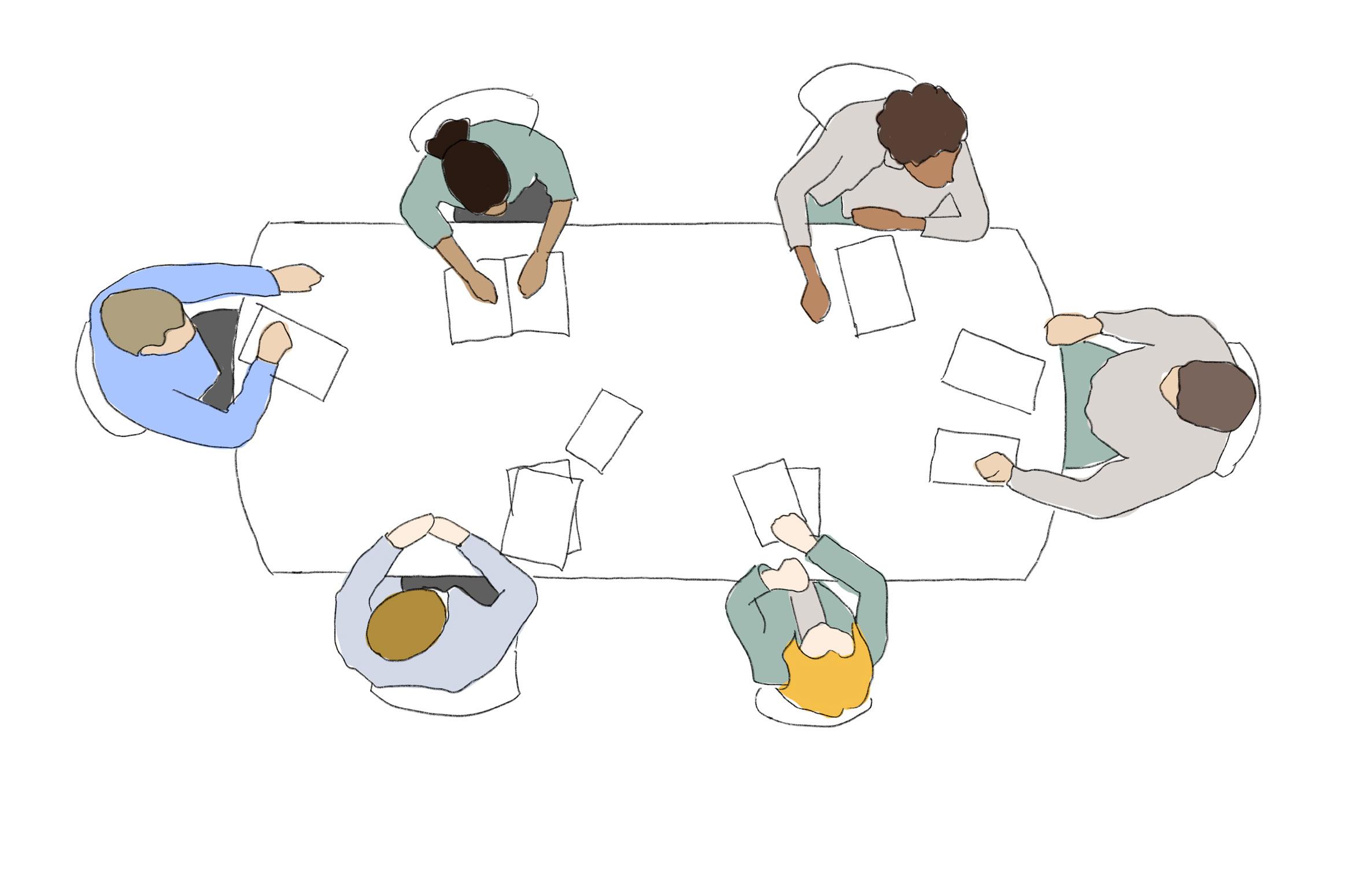

Moderated
by
Janalee MORRIS
Documented by Alexandra
ZABARKA
The thematic discussion on universal design highlighted the importance of integrating accessibility considerations from the outset rather than retrofitting later. Key themes included equity issues, particularly the disproportionate impact on marginalized communities like Indigenous and LGBTQIA+ individuals, and the need for inclusive and trauma-informed spaces. Action items suggested encompassed the establishment of safer bathroom protocols, prioritization of harm reducing housing, and the creation of smaller, scattered spaces throughout the city to address accessibility challenges. Additionally, the discussion emphasized the importance of listening to individuals’ needs, avoiding paternalism, and implementing community safety investment frameworks to ensure diverse needs are met. One wish expressed was to stop embedding police into innovative groups and instead focus on organizational supports that value individual autonomy. The design tools proposed included personas and a cast of design characters to evaluate spaces from different perspectives and ensure safety for all.
TABLE 9: PLANNING FOR SOCIAL INFRASTRUCTURE

Moderated by Darshan TAILOR and Doug BORSCH
Documented by Sarah
WILKINS
This thematic discussion focused on the implementation of day centres and public washrooms throughout Calgary’s public realm, considering the needs of Calgarians moving forward. Key ideas included supporting and creating a basic income, redefining housing as a human right with a Housing First model, and drawing inspiration from successful homelessness strategies globally. Emphasis was placed on creating inclusive spaces that promote freedom and choice, such as community kitchens and day centres fostering social connections. Flexible programming models and multi-purpose public spaces, exemplified by initiatives like the Century Gardens location, were also highlighted. The importance of accessible and self-maintaining public washrooms was discussed, along with considerations for gender inclusion, diverse needs, and weather impacts. Community involvement and feedback were deemed crucial in decision-making, aiming to create inviting public spaces that cater to various needs while enhancing safety and inclusivity.
PARTNER ACTION
Where do we go from here?
Based on the themes and recommendations from the symposium, here’s a list of action items and initiatives to ensure the conversation doesn’t stop here:
1. Establishment of Smaller Shelters and Initiatives:
• Identify suitable locations for smaller shelters to provide immediate relief for the unhoused population.
• Allocate resources to support initiatives aimed at addressing homelessness on a smaller scale, such as micro-housing projects or temporary shelter solutions.
2. Implementation of Housing First Policy:
• Advocate for the adoption and implementation of a Housing First policy within city and provincial governments.
• Collaborate with housing agencies and service providers to prioritize permanent housing solutions for individuals experiencing homelessness.
We need a lot of smaller shelters to separate the people that want to get away from drug dealing or off drugs
-
christine

There are lots of people who want to do things. There’s a lot of goodwill, and there are a lot of, as I say, good people doing good work but there doesn’t seem to be an overarching idea of what this community is supposed to be so I think that there’s a lack of focus.
- chad
3. Building Connections and Coordination:
• Create a platform or network for better coordination and information sharing among organizations working on homelessness and related issues.
• Foster interdisciplinary collaboration between universities, community partners, and frontline workers to address systemic challenges.
4. Community Engagement and Dialogue:
• Organize regular community forums or town halls to sustain dialogue on homelessness and social issues.
• Encourage public participation in decision-making processes related to urban development, housing policies, and social services.
5. Advocacy for Policy Reform:
• Advocate for policy changes to reduce barriers to housing development, such as streamlining planning processes and ensuring certainty of development approvals.
• Push for the inclusion of multi-family housing options in all neighborhoods to increase affordable housing stock.
6. Promotion of Public Art and Placemaking:
• Support initiatives to integrate public art and placemaking strategies into urban spaces to foster a sense of community and belonging.
• Explore innovative approaches like converting parking lots into parks to enhance public spaces and promote social interaction.
7. Trauma-Informed Service Culture:
• Promote training and resources to create a trauma-informed service culture within social service organizations.
• Evaluate support mechanisms regularly based on feedback from frontline workers and service users to ensure effectiveness.
8. Basic Income Support:
• Establish basic income programs to provide financial stability and support for individuals at risk of homelessness.
• Advocate for policy changes to recognize housing as a human right and prioritize Housing First models in social welfare programs.
9. Accessibility and Inclusivity in Public Facilities:
• Work towards the implementation of day centers and accessible public washrooms throughout Calgary’s public realm.
• Ensure that public facilities are designed with considerations for gender inclusivity, diverse needs, and weather impacts.

